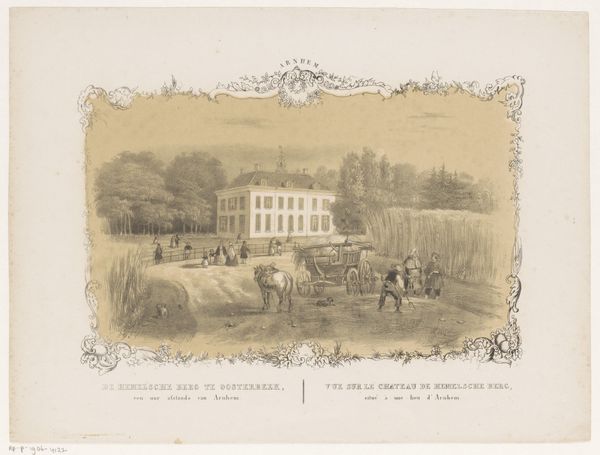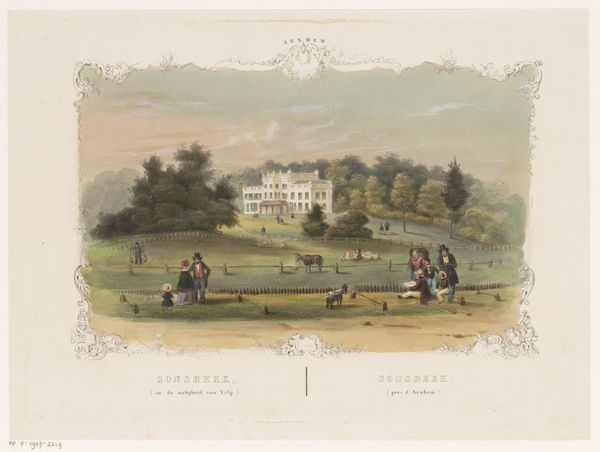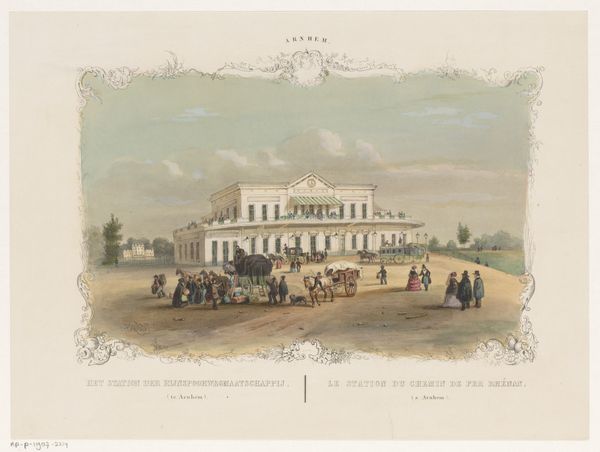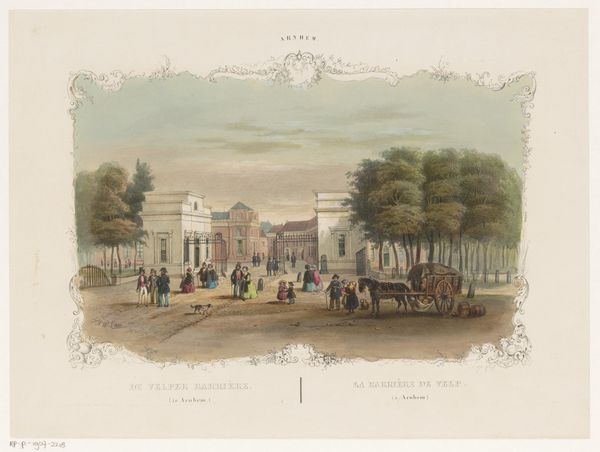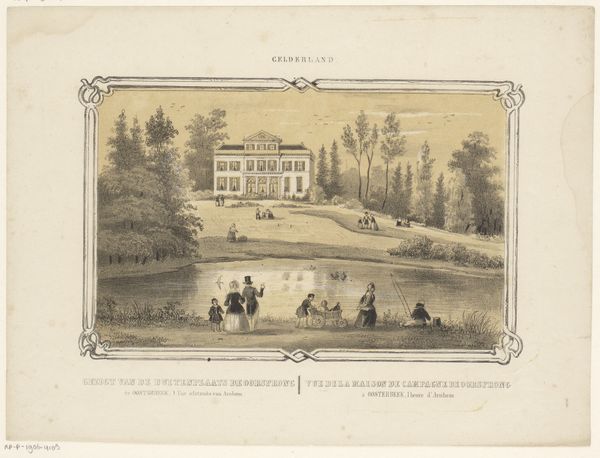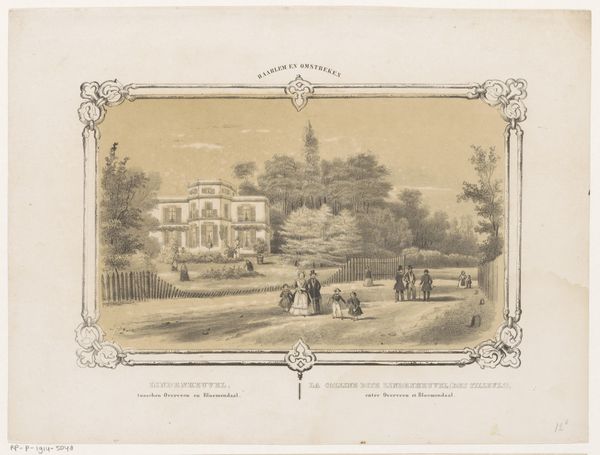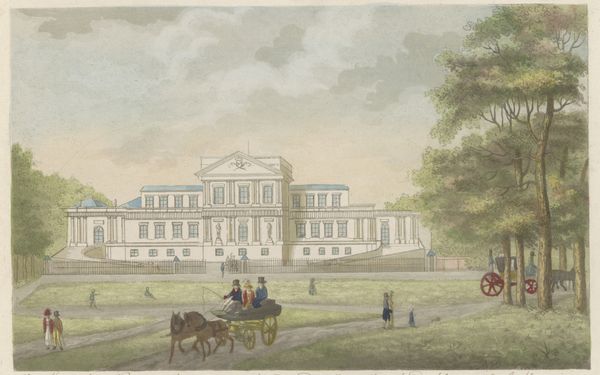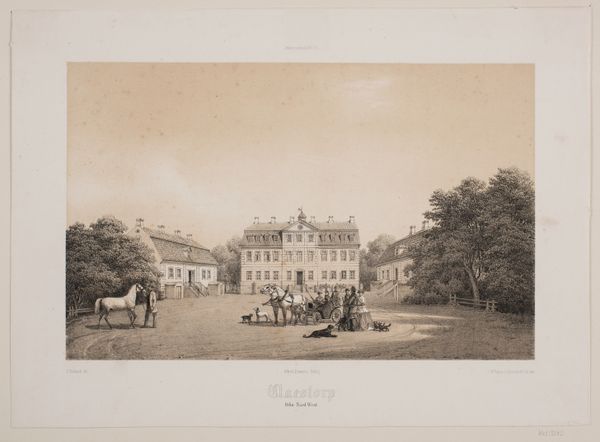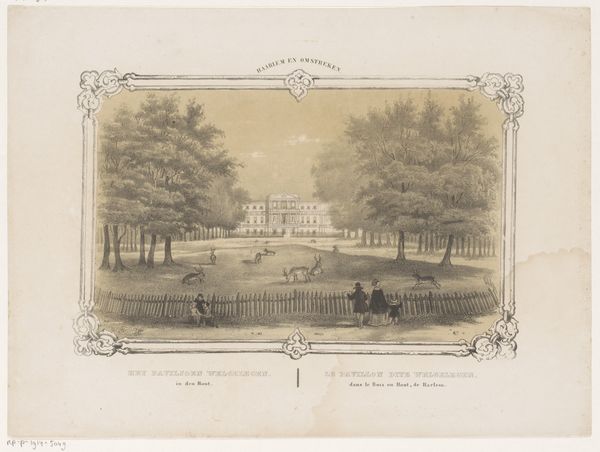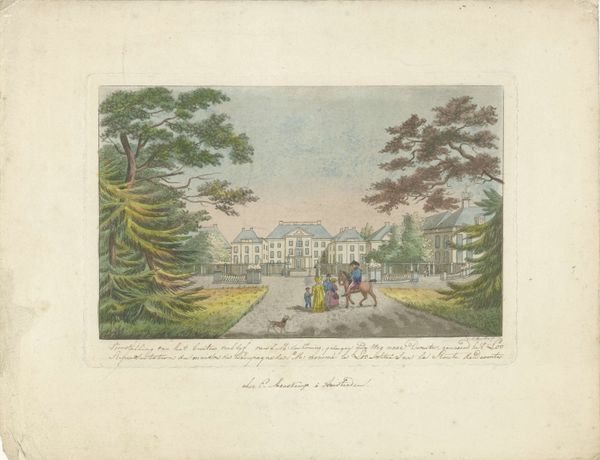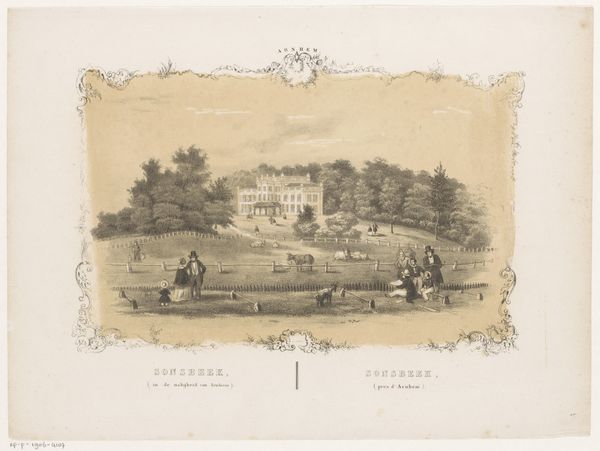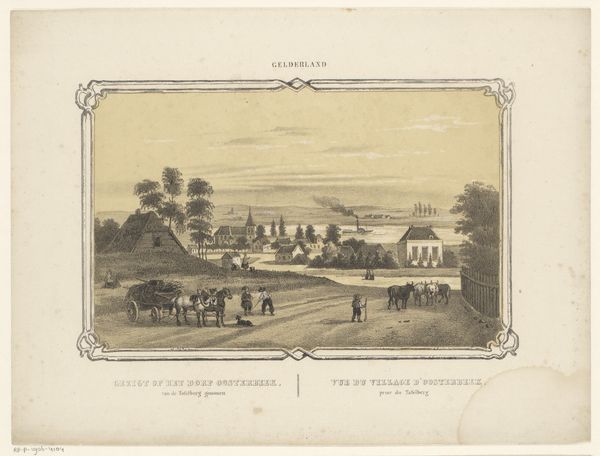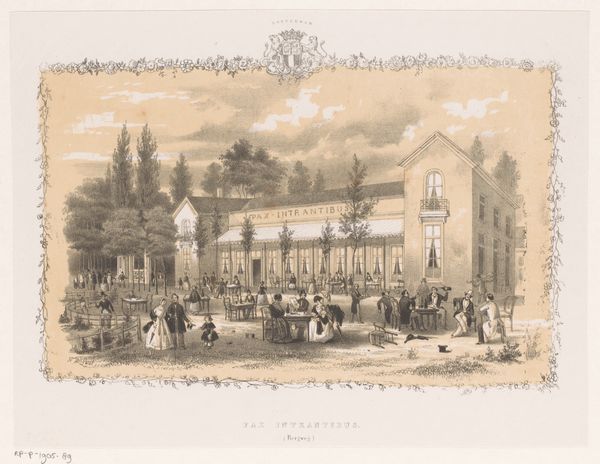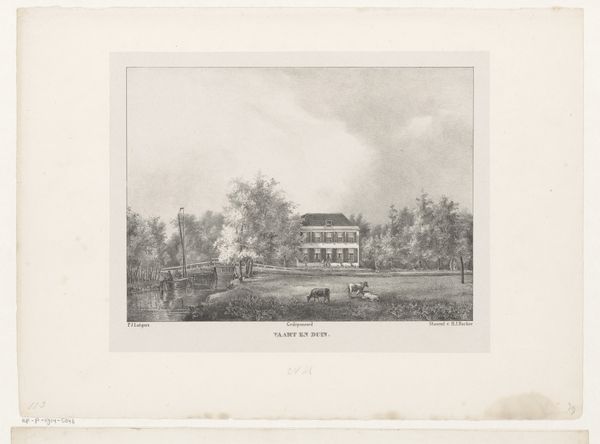
Gezicht op landgoed en huis Hemelse Berg in Oosterbeek 1827 - 1873
0:00
0:00
hendrikwilhelmuslast
Rijksmuseum
painting, plein-air, watercolor
#
painting
#
plein-air
#
landscape
#
watercolor
#
romanticism
#
watercolour illustration
#
genre-painting
#
botanical art
#
watercolor
Dimensions: height 251 mm, width 340 mm
Copyright: Rijks Museum: Open Domain
Editor: Here we have Hendrik Wilhelmus Last's "Gezicht op landgoed en huis Hemelse Berg in Oosterbeek," a watercolor painting sometime between 1827 and 1873. It's quite charming, almost like a detailed postcard. What jumps out to me is the framing - the artist included this embellished floral border, then nestled the illustration into the space it created. How would you interpret the choices in the composition? Curator: The appeal resides in its construction, doesn't it? Note how the composition's geometric arrangement gives a stable, balanced sensation: a centrally located house in the midground. The careful disposition of forms such as the rounded shapes of the trees contrasts to the right with the angularity of the wheat stalks creating visual tension and leading the eye through space. Is the artist prioritizing objective representation or projecting an aesthetic? Editor: It feels like it's more than just a visual record; there's a sense of curated beauty, especially with the choice of watercolor and the way the light plays on the building. Do you think the technique supports or detracts from its artistic integrity? Curator: "Artistic integrity" is itself a loaded concept! But examine how the application of watercolour, by its transparent qualities, yields this delicate balance between realism and an idealized form. It is less about achieving hyperrealism and more about distilling a feeling of serenity. Notice the relationship between its intrinsic parts and overall impression, not the romanticism genre association. Editor: So it's less about what it depicts and more about how it depicts it? Curator: Precisely. The elements coalesce, each carefully placed and considered, in the context of aesthetic interplay. Editor: That's a fresh take that offers new perspectives! Curator: Analyzing form over function illuminates details.
Comments
No comments
Be the first to comment and join the conversation on the ultimate creative platform.
